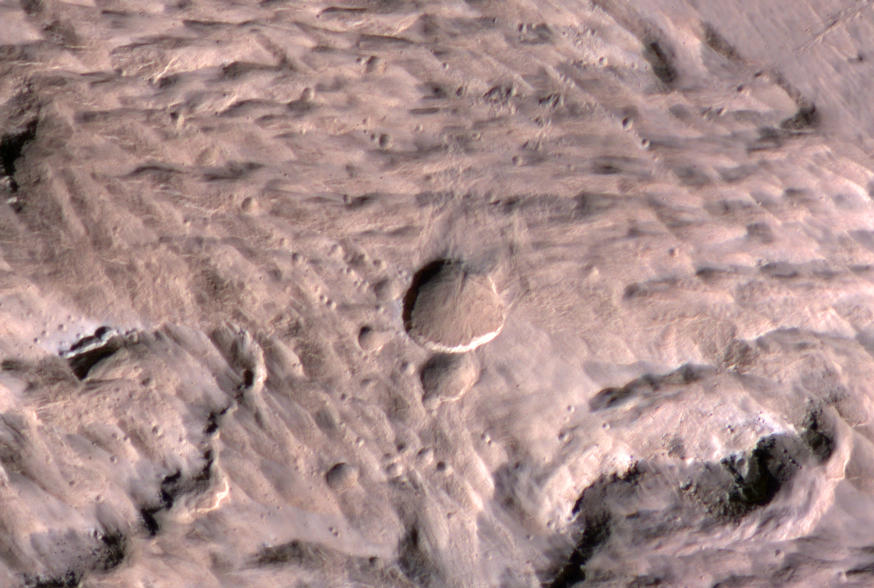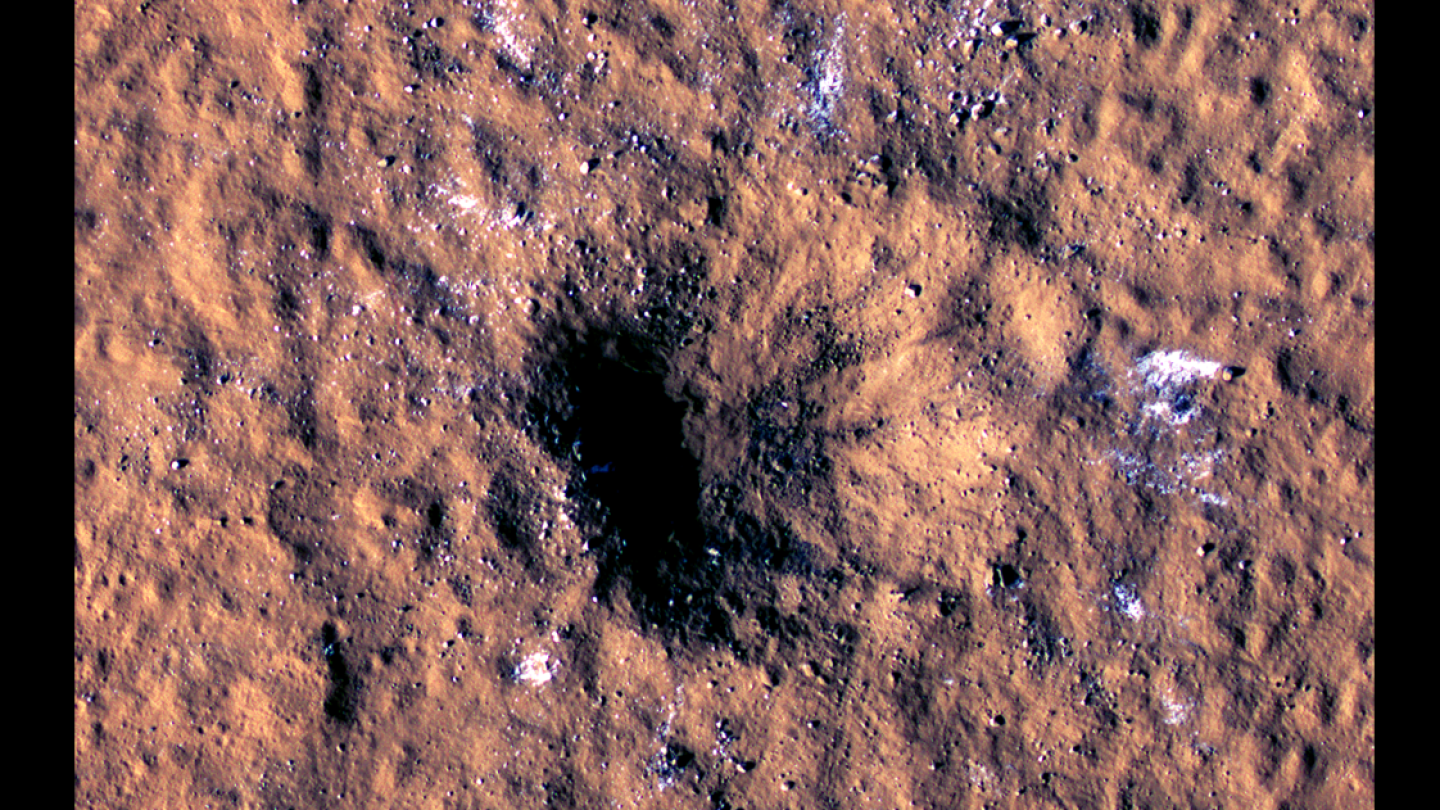As it slowly dies, NASA’s InSight Mars lander has made two major new discoveries recently. By sensing seismic activity from the Red Planet, the craft has now detected a large meteorite impact, and found evidence of magma pools and volcanic activity still occurring today.
There’s plenty of evidence to indicate that Mars used to be very volcanically active. It’s home to Olympus Mons, the largest volcano in the solar system standing almost three times taller than Mount Everest. And meteorites have suggested that somewhere on the Red Planet a volcano erupted non-stop for 2 billion years. But scientists have long thought that Mars had been geologically dead for millions or billions of years.

The InSight lander, however, may have revealed otherwise. This instrument has been listening in on seismic activity on Mars since 2018, and in that time it’s picked up over 1,300 “marsquakes.” In a new study led by ETH Zurich, a team analyzed more than 20 recent quakes that originated in Cerberus Fossae, a region full of apparent fault lines.
These low-frequency quakes indicated that they’re potentially coming from a warm subterranean source – a pool of magma. This goes against the current thinking that the planet should be cold and long dead. Stranger still, orbital images revealed dark deposits of dust around a fissure that lies near the epicenters of these quakes.
“The darker shade of the dust signifies geological evidence of more recent volcanic activity – perhaps within the past 50,000 years – relatively young, in geological terms,” said Simon Stähler, lead author of the study.
The team says that this could be Mars’ last volcanic hurrah as it cools down. Or, it could mean that the magma is slowly flowing eastward towards a location where it may erupt again in the future. Either way, it’s a fairly unexpected find.
But not all of InSight’s detections come from below ground – some originate in the sky above.
Meteorite impact

The new impact crater, as seen by the Mars Reconnaissance Orbiter. White spots indicate chunks of water ice thrown loose from beneath the surface
NASA/JPL-Caltech/University of Arizona
On December 24, 2021, inSight detected a magnitude 4 marsquake. That in itself was none too surprising, but it wasn’t until a few months later that scientists realized it wasn’t just any old quake. On February 11, 2022, scientists monitoring data from the Mars Reconnaissance Orbiter (MRO) discovered a large crater had appeared in the space of 24 hours – on the same date as the quake, and right where the epicenter had been.
While meteorites strike Mars all the time, this event was one of the largest observed anywhere in the solar system. It left behind a crater spanning about 150 m (492 ft) wide and 21 m (69 ft) deep, indicating the original rock was between 5 and 12 m (16 and 39 ft) wide.
“It’s unprecedented to find a fresh impact of this size,” said Ingrid Daubar, leader of InSight’s Impact Science Working Group. “It’s an exciting moment in geologic history, and we got to witness it.”
Most intriguingly, the impact dug up boulder-sized chunks of water ice and scattered them around the crater. While it’s been observed on other parts of Mars, this ice is the closest to the equator seen so far, which is good news for any future human visitors to the Red Planet.
The meteorite impact also provided another new peek into Mars. All other seismic waves detected by InSight so far have propagated through the depths of the planet, but this impact sent waves across the surface as well. This in turn revealed that the Martian crust is very dense and has a uniform structure.
Unfortunately, InSight doesn’t have much time left to gather data. The lander’s solar panels have been coated in a thick layer of dust, preventing it from charging efficiently. By December it’s expected to shut down completely. Still, its primary mission has been completed and its extended science mission has returned even more valuable data.
The new discoveries were published across three papers, one appearing in Nature Astronomy and two others in Science. The seismic activity from the impact can be heard in the video below.
NASA’s InSight Records the Sound of a Martian Impact





